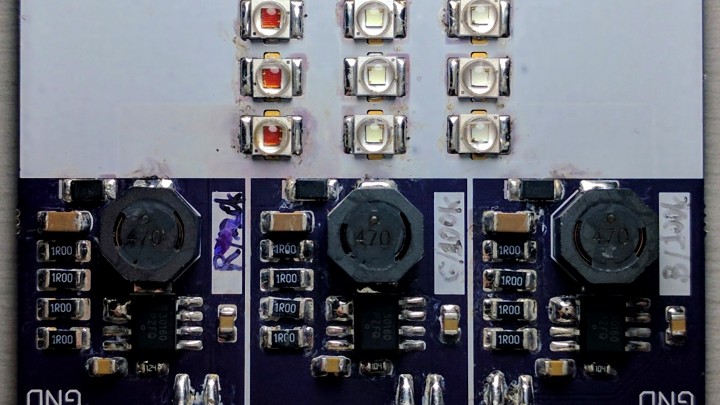LiShield - a gadget that blocks the camera of a smartphone when trying to take a picture

If earlier a photo could be taken only with a camera (what quality is the second question), now you can take pictures with anything. Camera modules are inserted into smartphones, pens, watches and other gadgets. It is clear that not all people are happy with the fact that they can gradually photograph, without permission. How to protect yourself? You can try to identify the camera on the lens glitter (there are special devices for this). Well, you can just spoil the pictures using a special system called LiShield.
It emits light using LEDs. LEDs change brightness with a certain frequency, about the same with which camera sensors work on mobile devices like smartphones. The resulting images are hardly suitable for viewing - they have wide black vertical stripes that take up about 50% of the photo, and possibly more. At the same time, the human eye does not perceive flicker, it does not interfere.
“Shooting is prohibited in gyms, examination rooms and other locations. But if a person hides recording equipment well enough, then “detect” it is not possible, ”said Xinyu Zhang, one of the participants of the LiShield project. According to KGO, a tool has now appeared that helps prevent unauthorized shooting. "Our main achievement is the creation of an automatic privacy protection system."
As mentioned above, the sensors of the cameras of any phone have certain modes of operation that the user cannot change. And if the lighting flickers with a certain frequency, the pictures are spoiled. Mobile cameras simply cannot withstand a rapid change in the intensity of illumination during exposure to the same scene. For the first time, this system was presented at the ACM Mobicom 2017 conference, which began on October 16 in the United States, near Salt Lake City.
LiShield spoils not only pictures, but also video. Previously, researchers tried to create various systems that would perform functions similar to those of LiShield. For example, they created powerful sources of infrared radiation. And such a system can be effective, but the problem is that in addition to cameras, it also affects the human eye. “We decided to use visible radiation because of safety concerns,” says one of the project participants.
The most interesting thing is that LiShield acts selectively. For example, the system may allow authorized users to take photos and shoot videos, but it affects the devices of any other users. True, this is quite difficult to do - you need a special application for a smartphone that synchronizes the operation of the camera with the frequency of changing the illumination intensity of the LiShield. Information about the patterns of illumination is transmitted by the same system to the application on the mobile device of the authorized user.
In order to deploy LiShield, do not need sophisticated technology. The control module of such a system can easily be integrated with conventional LEDs that are sold in stores.
It is clear that LiShield has certain technical limitations. For example, all this works only in the room where LED lighting is used. In addition, LiShield can not block pictures and videos that the operator receives with the help of professional equipment with its own lighting. If the sun peeks in through the window, then LiShield will also be useless, or, in any case, the operation of the system will only slightly affect the quality of the resulting images.

But so far, the system is only in the initial stage of implementation - this is a proof-of-concept without practical application. Now developers are going to create a system that can be used with a much wider set of conditions than it is now.
Another task is to develop a reliable way to authorize cameras whose operators have the right to work in a specific location. This is not so easy to do. In addition, developers receive requests for the use of LiShield not only in small spaces. For example, the military is asking developers to create a system capable of completely hiding what a mobile phone user is photographing. That is, we are not talking about vertical stripes, but about “exposing” a digital image that would be completely black.
All Articles